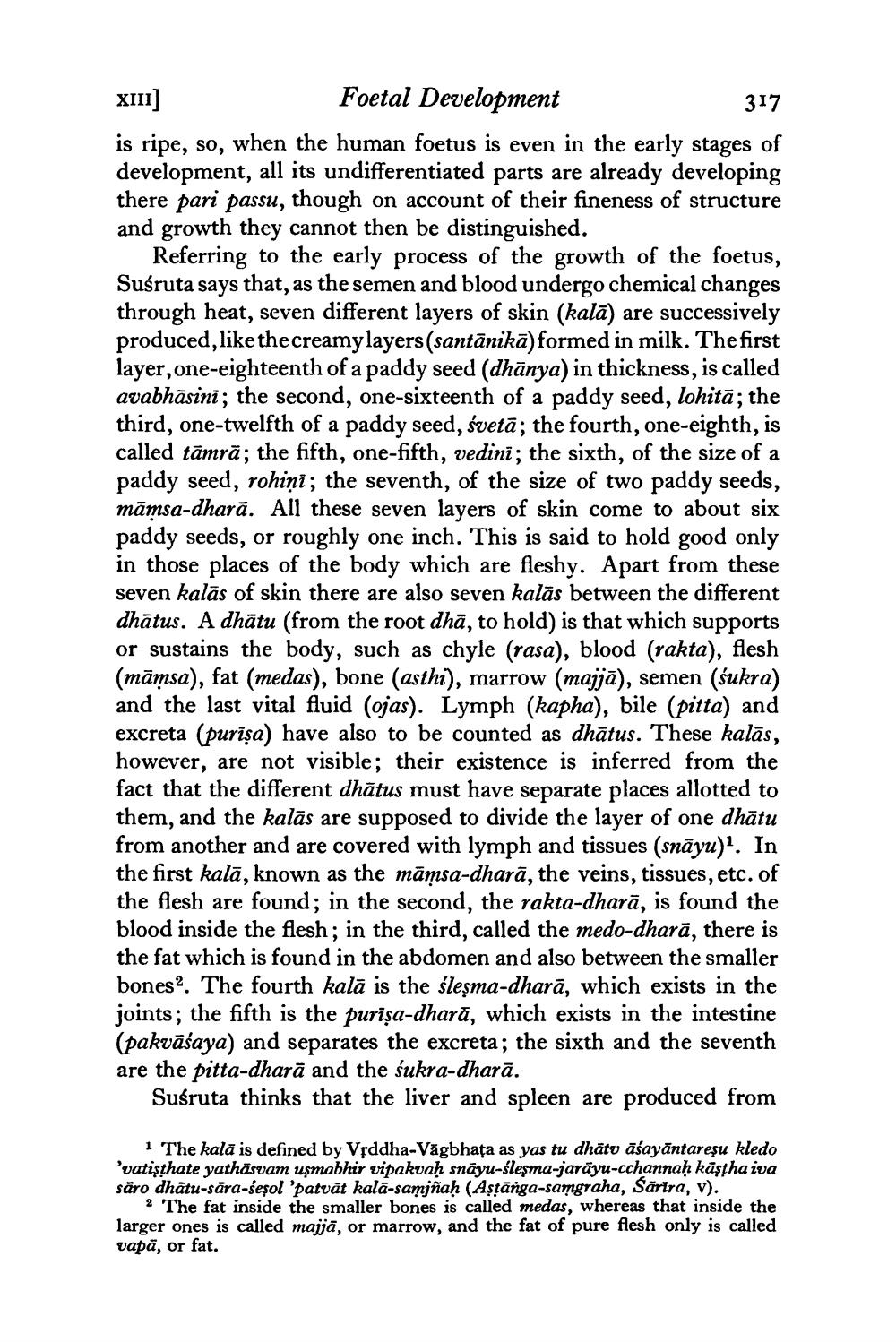________________
XIII]
Foetal Development
317
is ripe, so, when the human foetus is even in the early stages of development, all its undifferentiated parts are already developing there pari passu, though on account of their fineness of structure and growth they cannot then be distinguished.
Referring to the early process of the growth of the foetus, Suśruta says that, as the semen and blood undergo chemical changes through heat, seven different layers of skin (kala) are successively produced, like the creamy layers (santānikā) formed in milk. The first layer, one-eighteenth of a paddy seed (dhānya) in thickness, is called avabhāsini; the second, one-sixteenth of a paddy seed, lohita; the third, one-twelfth of a paddy seed, sveta; the fourth, one-eighth, is called tāmrā; the fifth, one-fifth, vedini; the sixth, of the size of a paddy seed, rohini; the seventh, of the size of two paddy seeds, māmsa-dharā. All these seven layers of skin come to about six paddy seeds, or roughly one inch. This is said to hold good only in those places of the body which are fleshy. Apart from these seven kalās of skin there are also seven kalās between the different dhātus. A dhātu (from the root dha, to hold) is that which supports or sustains the body, such as chyle (rasa), blood (rakta), flesh (māmsa), fat (medas), bone (asthi), marrow (majjā), semen (śukra) and the last vital fluid (ojas). Lymph (kapha), bile (pitta) and excreta (purīşa) have also to be counted as dhātus. These kalās, however, are not visible; their existence is inferred from the fact that the different dhātus must have separate places allotted to them, and the kalās are supposed to divide the layer of one dhātu from another and are covered with lymph and tissues (snāyu)1. In the first kalā, known as the māmsa-dharā, the veins, tissues, etc. of the flesh are found; in the second, the rakta-dharā, is found the blood inside the flesh; in the third, called the medo-dhara, there is the fat which is found in the abdomen and also between the smaller bones2. The fourth kalā is the śleṣma-dhara, which exists in the joints; the fifth is the purișa-dhara, which exists in the intestine (pakvāśaya) and separates the excreta; the sixth and the seventh are the pitta-dhara and the sukra-dharā.
Suśruta thinks that the liver and spleen are produced from
1 The kalā is defined by Vṛddha-Vägbhața as yas tu dhātv āśayāntareşu kledo 'vatişthate yathasvam uşmabhir vipakvaḥ snayu-śleşma-jarayu-cchannaḥ kāṣṭha iva saro dhātu-sara-seşol 'patvāt kala-samjñaḥ (Aṣṭānga-samgraha, Särira, v).
2 The fat inside the smaller bones is called medas, whereas that inside the larger ones is called majja, or marrow, and the fat of pure flesh only is called vapă, or fat.




